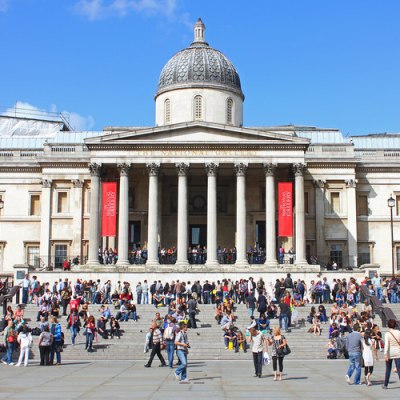An exhibition opening at the Yale Center for British Art looks at Victorian sculpture from a fresh historical perspective. To find out more we spoke to Martina Droth, Associate Director of Research and Education and Curator of Sculpture at the Yale Center for British Art.
Click here for a gallery of highlights…
Can you tell us a bit about the exhibition?
The exhibition focuses on the making and viewing of sculpture in Britain and its empire during the Victorian period, and considers the sheer proliferation of sculpture at this time. Our goal has been to understand why sculpture became such a critical form of representation, by examining the cultural and political roles it was given to play. As Britain positioned itself as the world’s most powerful nation, with a vast empire, sculpture provided a very public means of proclaiming the nation’s prowess. Hence our title, ‘Sculpture Victorious’, which points to the use of sculpture to create an unfailingly positive image of power.
What makes this a distinctive show?
Sculpture has represented something of a lacuna in the study of Victorian culture, despite the great interest in other artistic developments during this period. This is the first museum exhibition to present sculpture in the Victorian era as a coherent historical subject and to reconsider its meanings and significance to the culture.
How did you come to curate this exhibition?
As Curator of Sculpture at the Center, and the first person to hold that position, I have naturally sought to develop projects that bring sculpture into focus in new ways. Given how little exposure Victorian sculpture has had in museums, this was an important project to undertake. I have a long-standing interest in this field, so when the exhibition was proposed, it was a perfect fit. I have known my co-curators, Michael Hatt and Jason Edwards, for many years, making this a very productive partnership.
What is likely to be the highlight of the exhibition?
A seven foot tall majolica elephant produced by Minton & Co. It is one of a pair made for the 1889 Exposition Universelle in Paris, and is a spectacular example of the kinds of objects that were made, especially for display at international exhibitions. It overtly demonstrates the huge investments made by manufacturers in producing feats of craftsmanship. In the context of the Paris Exposition it would have stood as a triumphant symbol not only of Minton, but of Britain’s technological and economic prowess.
And what’s been the most exciting personal discovery for you?
Becoming more familiar with works that are not in museums, such as the vast sculptural program in the Palace of Westminster. One astonishing loan is a statue from the House of Lords, which is not readily accessible to the public. It represents the Earl of Winchester, and is one of 18 statues representing the barons and prelates who in 1215 helped secure the signing of Magna Carta, limiting the powers of the monarchy. The statues are set into niches some 25 feet above the floor of the Chamber. It is exciting to bring one of these works into public view – it speaks powerfully to the use of sculpture as a political symbol, and at the same time, extracted from its architectural context, it can be seen up close, as a unique object in its own right.
What’s the greatest challenge you’ve faced in preparing this exhibition?
Resisting the standard narratives by which our subject is routinely characterised, and trying to take a fresh historical view of the objects.
How are you using the gallery space? What challenges will the hang/installation pose?
The Center is housed in a 1970s building designed by Louis Kahn, which I have found to be very sympathetic to the display of sculptures. The galleries are arranged around a sky-lit interior courtyard which brings in natural light and offers vistas across spaces. I wanted to make the best use of the space to reflect the show’s ambitions. I minimised the use of dividing walls, to make visual connections between works and across distances. Light-sensitive works are grouped together in darker spaces, so that other parts of the floor can be opened up to natural light.
Which other works would you have liked to have included?
I wanted to include Raffaele Monti’s Veiled Vestal from the Devonshire collection but it proved too fragile to travel. Monti was renowned for his extraordinary virtuoso skills as a marble carver, and he pushed the medium to a new level. The Veiled Vestal was famous for the illusory rendering of the transparent veil over the figures’ face. Fortunately the work will still be part of our story, as it will travel Tate Britain and is discussed in the book that accompanies the exhibition.
‘Sculpture Victorious: Art in an Age of Invention, 1837-1901’ runs at the Yale Center for British Art from 11 September–30 November 2014, and at Tate Britain from 24 February–18 May 2015.


